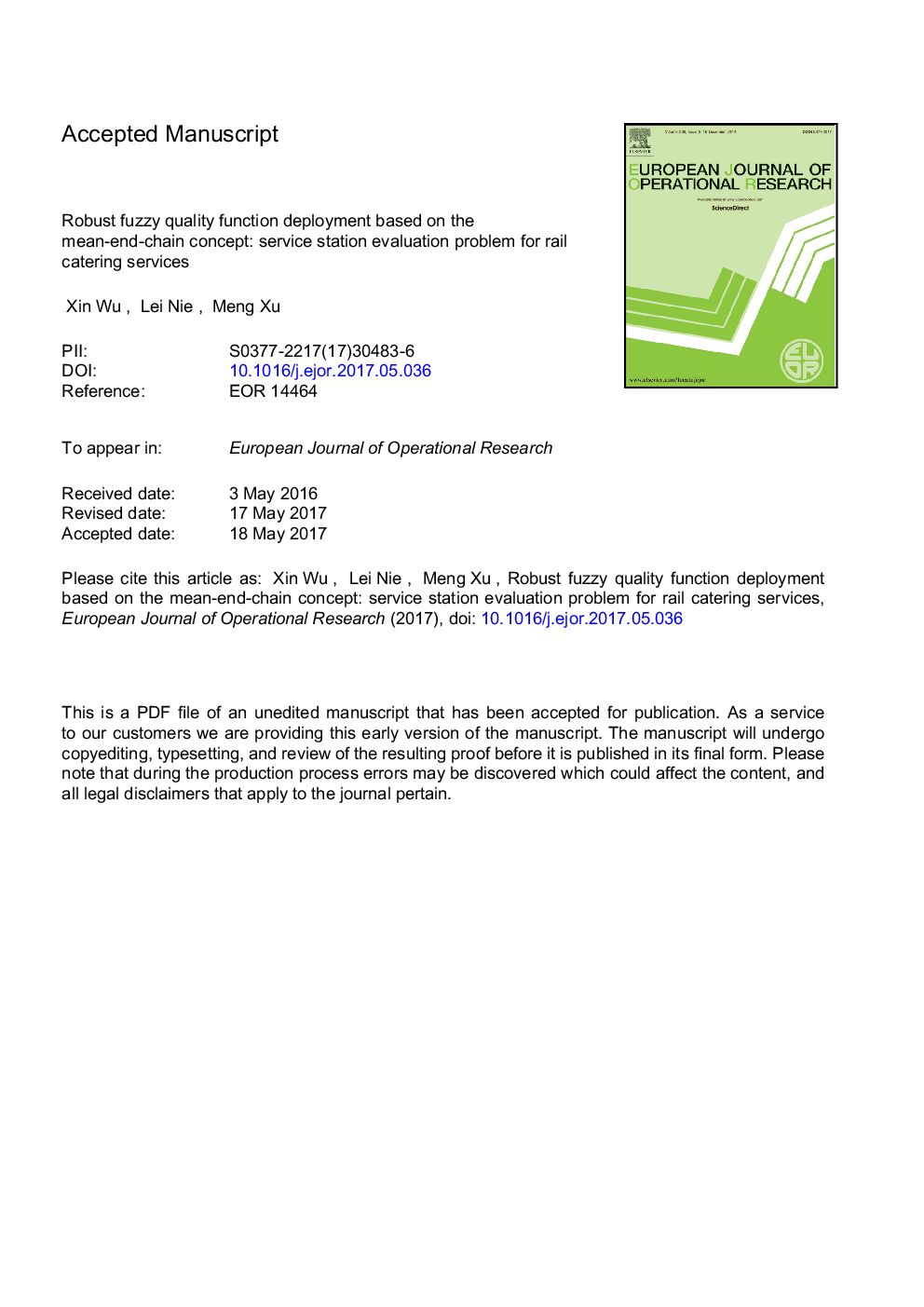| Article ID | Journal | Published Year | Pages | File Type |
|---|---|---|---|---|
| 4959354 | European Journal of Operational Research | 2017 | 45 Pages |
Abstract
One task that catering services for high-speed railways (CSHRs) must accomplish is to identify and evaluate potential service stations before the design phase of the distribution system. Fuzzy quality function deployment (F-QFD) is one approach for processing the evaluation scheme by translating the basic requirements described in vague terms into actionable alternatives. However, fuzzy importance ratings obtained using F-QFD might be misleading because the approach does not consider the random fluctuations of the fuzzy importance ratings. This paper first proposes a two-phase robust F-QFD process that is integrated with a robust analysis to consider how the QFD process can interact with both the fuzziness and the randomness found in real-world management. Two indicators that measure absolute and relative robustness are proposed. Second, following the mean-end-chain concept, this paper considers the close relationship between the two phases by developing a set of robustness-oriented fuzzy goal programming (RFGP) models to determine the locations of potential service stations. Two robustness indicators are introduced into the two-phase RFGP models to mitigate the adverse effect of random fluctuations. To address the fuzzy and binary variables in the model of phase 2, a hybrid cross-entropy method (HCEA) is developed. The overall framework is termed two-phase robust F-QFD based on the mean-end-chain (MEC) concept (R2-F-QFD-MEC). A series of computational experiments demonstrate both the effectiveness of the framework and the benefits of the robustness-oriented F-QFD. A case study regarding 33 potential service stations along the Beijing-Shanghai high-speed corridor is used to demonstrate the applicability of the method.
Related Topics
Physical Sciences and Engineering
Computer Science
Computer Science (General)
Authors
Xin Wu, Lei Nie, Meng Xu,
